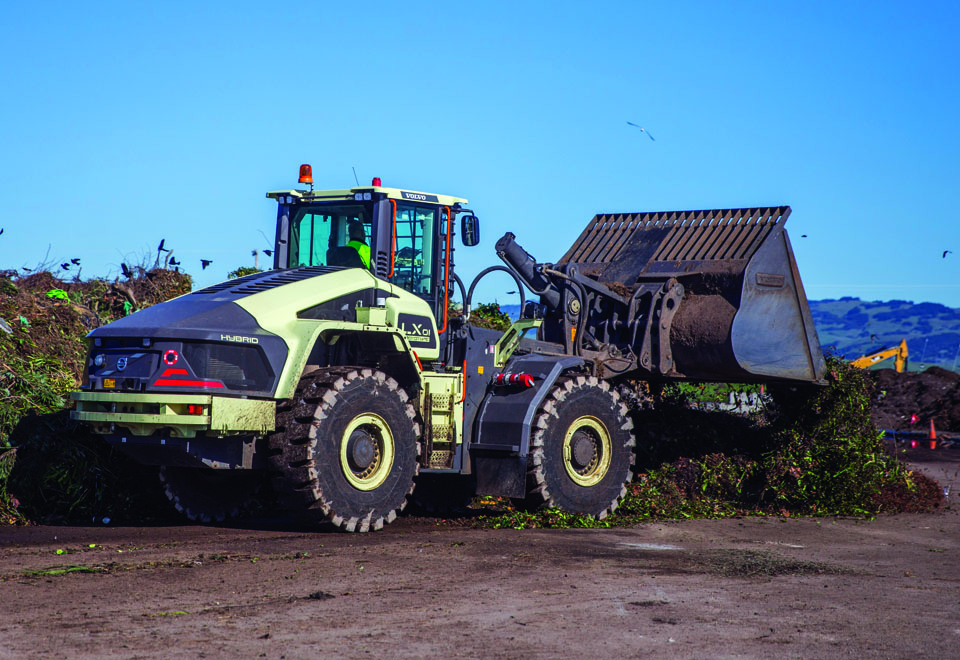Volvo Construction Equipment’s prototype LX1 hybrid wheel loader has shown a fuel efficiency improvement of roughly 50% compared to its conventional counterparts during real-world testing with a waste management customer in the USA.
Since Volvo CE announced the concept last year, the LX1 has performed hundreds of hours of real work in two applications at two facilities – a green waste composting site and transfer site – operated by Waste Management, in the state of California.
Both fuel efficiency and greenhouse gas emission tests were conducted at the facility, and while the data is still being analysed, the results so far show an improvement in fuel efficiency of close to 50%, or a 35% reduction in fuel consumption and greenhouse gas emissions.
“We are pleased with the results from the field testing,” says Scott Young, electromobility director at Volvo CE. “Although we’d already seen the LX1 reach up to a 50% improvement in fuel efficiency in our internal tests, every application and operator are different.
“Because of this, we were aiming for a 35% improvement in fuel efficiency in this project. But we are happy to say that we’ve significantly exceeded this figure and achieved similar results to those recorded at our test site in Sweden.”
Prior to testing the LX1, the company ran a conventional machine at both sites to gather baseline data, and the project was overseen by CALSTART, which conducted emission tests on the machine, and the California Energy Commission, which provided over $1.8m to help fund the LX1 project.
Aside the benefits in terms of fuel consumption, the response from the operators was highly positive, with them citing “the dramatic reduction in noise, improved visibility over the rear of the machine, ease of operation and powerful hydraulics”, according to Young.
“But they also gave us constructive feedback on areas we can refine, such as improving functions like traction control and gear shifting, actions that will enhance operability.
“Now we’ve concluded the field tests, the machine will be shipped back to Sweden for updates and tuning based on what we’ve learnt over the last six months. At this stage, the LX1 is still part of a development project and it is not commercially available.”
The funding from the California Energy Commission came as part of its Alternative and Renewable Fuel and Vehicle Technology Program, which invests up to $100m every year to support advancements in alternative, renewable fuels and the vehicles powered by them in California.




